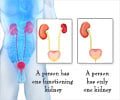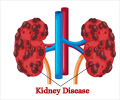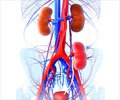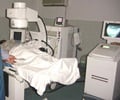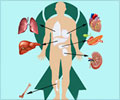Approximately one-third of the patients on the national waiting list for kidney transplants have only a small chance of receiving a new organ, no matter how long they are on the list.
Approximately one-third of the patients on the national waiting list for kidney transplants have only a small chance of receiving a new organ, no matter how long they are on the list. Due to prior transplants, pregnancies or blood transfusions, these patients have developed antibodies that make it very difficult to match them with donor organs.
Researchers at Emory University have developed a decision process, based on innovative technology, that may help to level the transplant playing field and give new hope to these "highly sensitized patients." The Emory Algorithm, as this new method is known, may even change the way kidneys from deceased donors are allocated in the United States.Sensitized patients have developed antibodies against human leukocyte antigens (HLAs), which play an important role in the body's immune response to foreign tissue. These patients represent one-third of the national waiting list for kidney transplant patients (50 percent in Georgia), but they only receive about 15 percent of deceased-donor kidney transplants each year.
The United Network for Organ Sharing (UNOS) coordinates the nation's transplant system through a point system based primarily on wait time, sensitization and HLA matching. When a "perfect match" occurs, the kidney is offered to the person at the top of the national list. If there are no perfect matches nationally, the kidney becomes available to transplant centers in the region from which it came.
The Emory Algorithm, while still following these guidelines, allows a transplant center to predict which sensitized patients on the list will be compatible with any given donor. A five-year Emory study, published in the October 2006 issue of the American Journal of Transplantation, found the algorithm raised the rate of transplants from 15 percent to 25 percent in sensitized patients by accurately predicting which of these patients would be compatible with the donor kidney. The survival rate of a kidney transplant in sensitized patients in the five-year study was almost identical to that of unsensitized recipients--66 percent vs. 70 percent.
The algorithm was developed by Emory immunologists Robert Bray, PhD, and Howard Gebel, PhD, along with Emory transplant surgeons Christian Larsen, MD, DPhil and Thomas Pearson, MD, DPhil. They used a relatively new technology of single-antigen bead assays, which gives a more specific analysis of HLA antibodies by identifying a single antibody at a time versus general groups of antibodies. The algorithm allows immunologists to inform transplant surgeons with a high degree of confidence whether a kidney from a deceased donor is a compatible match with a recipient.
"Each of us has a constellation of HLAs, with six major ones related to kidney transplantation and dozens of specific HLAs within each of those antigen groups," says Dr. Bray. "Studies show the more antigens a donor and recipient share, the better the survival rate of the transplanted kidney. With the older technique of cross matching HLA cells with the blood of a potential recipient, we couldn't always identify which HLAs the antibodies were targeting. False readings could occur."
Advertisement
While some transplant centers use these same single assay tests to identify HLA antibodies, they don't incorporate the data into their cross-matching process. Prior to the Emory Algorithm, highly sensitized patients may have been at a disadvantage due to the time constraints in the organ donor process, which did not allow transplant centers to determine if they could receive the kidney that was available. At Emory, sensitized patients have an increased chance of receiving a transplant.
Advertisement
Based on results of the Emory study, a UNOS committee is looking at the algorithm as UNOS reevaluates its kidney allocation system. The committee is expected to make recommendations this year, according to Mark Stegall, MD, a transplant surgeon at the Mayo Clinic who chairs this committee. Dr. Pearson also sits on the committee.
"I hope the algorithm process will become national policy as part of an overall kidney allocation policy," Dr. Stegall says. "Eighty percent of transplant programs are using the single-antigen bead technology, but relatively few are using that data as a way to allocate kidneys to sensitized patients." But Dr. Stegall is not ready to commit to a system based only on organ compatibility as determined by antibodies. "Kidneys are a scarce resource," he says. "We have to put sensitization in perspective. There is always an unsensitized patient out there."
The Emory algorithm helps equalize the allocation scheme, Dr. Pearson says. With this system everyone on the waiting list would be considered for an available kidney, but only the best match would receive it. "We have to balance priorities to try and help as many people as possible," he says.
"There is a perception that patients who are highly sensitized have poor outcomes," says Gebel, "but that is not our experience."
Source-Eurekalert
SRM

